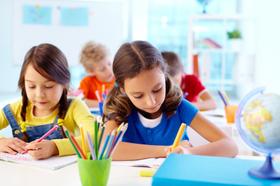For the 2025 school year, there is 1 public school serving 933 students in 20015, DC (there are , serving 1,929 private students). 33% of all K-12 students in 20015, DC are educated in public schools (compared to the DC state average of 83%).
The top ranked public school in 20015, DC is Lafayette Elementary School. Overall testing rank is based on a school's combined math and reading proficiency test score ranking.
ÎÛÎÛÂþ» school in zipcode 20015 have an average math proficiency score of 76% (versus the District Of Columbia public school average of 20%), and reading proficiency score of 75% (versus the 31% statewide average). Schools in 20015, DC have an average ranking of 10/10, which is in the top 5% of District Of Columbia public schools.
Minority enrollment is 28% of the student body (majority Black and Hispanic), which is less than the District Of Columbia public school average of 87% (majority Black).
Best 20015, DC ÎÛÎÛÂþ» Schools (2025)
School
(Math and Reading Proficiency)
(Math and Reading Proficiency)
Location
Grades
Students
Rank: #11.
Lafayette Elementary School
(Math: 76% | Reading: 75%)
Rank:
Rank:
10/
Top 5%10
5701 Broad Branch Rd. Nw
Washington, DC 20015
(202) 282-0116
Washington, DC 20015
(202) 282-0116
Grades: PK-5
| 933 students
Frequently Asked Questions
What are the top ranked public schools in 20015, DC?
The top ranked public schools in 20015, DC include Lafayette Elementary School.
How many public schools are located in 20015?
1 public schools are located in 20015.
What percentage of students in 20015 go to public school?
33% of all K-12 students in 20015 are educated in public schools (compared to the DC state average of 83%).
What is the racial composition of students in 20015?
20015 public schools minority enrollment is 28% of the student body (majority Black and Hispanic), which is less than the District Of Columbia public schools average of 87% (majority Black).
Recent Articles

Segregation in K-12 Education: Colonial Era
Explore the origins of educational segregation during the colonial era and the differential treatment of Native American, African American, and white students. This article delves into the historical context, policies, and societal attitudes that shaped early education in colonial America, highlighting the disparities and injustices that persisted within the schooling systems of that time.

2011 Classroom Size Update: Are Classes Still Growing Larger?
Since the recession, public school classrooms have seen major budget cuts - and many increases in class sizes. How is the situation in 2011? Read this article to find out.

Will Single Sex Classrooms Save ÎÛÎÛÂþ» Schools?
Learn about the benefits of single sex classrooms and why public schools are hoping this type of classroom will save the American school system.
